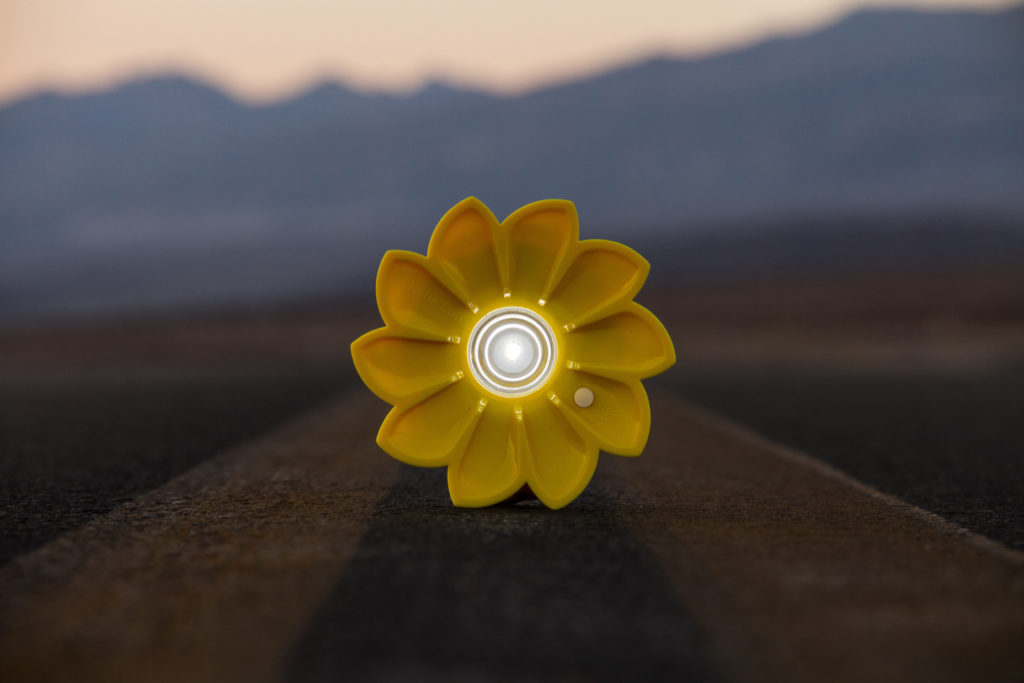
Little Sun Original, on the road. © Nicky Angunwa.
Icelandic-Danish artist Olafur Eliasson and his social enterprise Little Sun have partnered with IKEA to create a series of sustainable solar-powered tools that will soon be available in stores worldwide. “By collaborating with IKEA, Little Sun wants to inspire and explore new ways to harness the power of the sun through intelligent and creative design,” the company said in a statement.
Eliasson, along with engineer Frederic Ottesen, co-founded Little Sun in 2012 with the goal of providing an alternative source of energy to those who don’t have access to electricity. The enterprise’s first product, the Little Sun lamp, can provide up to 50 hours of light after only five hours of solar charging. While the project initially sought to focus on Ethiopia, the lamps are now distributed worldwide with over 661,578 sold. By partnering with IKEA, the company hopes to broaden the conversation surrounding sustainable energy: “Little Sun is primarily working with off-grid solutions and it’s about people at the very bottom of the pyramid who do not have access to clean energy,” Eliasson told artnet News, “But Little Sun is also about learning how to have a relationship with sustainable energy in the so-called on-grid world.”
Product development research is said to begin shortly, with the first products scheduled to be revealed in 2019.
News of the Week
- The Museum of Fine Arts in Boston has acquired thirty-seven works by Mexican photographer Graciela Iturbide. Known for documenting daily life in Mexico, particularly that of indigenous communities, Iturbide began her career in the early 1970s under the mentorship of Manuel Álvarez Bravo. The acquisition, which features works from projects focusing on three Mexican indigenous communities, is intended to support to the museum’s upcoming exhibition Graciela Iturbide’s Mexico, opening in January 2019.
- Axis Mundo: Queer Networks in Chicano L.A., curated by C. Ondine Chavoya and David Evans Frantz as part of the project Pacific Standard Time: LA/LA, is now on view at 205 Hudson Gallery in New York. The exhibition explores the intersections among a network of over fifty Los Angeles-based queer Chicanx artists working between the late 1960s and early 1990s. On view through August 19, it features works from Laura Aguilar, Judith F. Baca, Mundo Meza, and Faith Wilding, among many others.
- The Museum of Modern Art and MoMA PS1 have selected Hide & Seek by Jennifer Newsom and Tom Carruthers from the architectural studio Dream The Combine, in collaboration with Clayton Binkley of ARUP, as the 2018 winner of the annual Young Architects Program (YAP). The work, currently on view in MoMA PS1’s courtyard, consists of a series of interlocking spatial bands defined by steel frames, canvas canopies, and rotating mirrors. “It casts this equalizing space,” Newsom told Metropolis Magazine, “everybody could be there with their multiple perspectives, their multiple histories of movement.”
- William Kentridge has been commissioned to create a performance that will pay tribute to the hundreds of thousands of Black Africans who died fighting in World War I as part of the armies of their colonial rulers. The piece, titled The Head & the Load, will premiere at London’s Tate Modern on July 11, and will later travel to New York’s Park Avenue Armory in December 2018.
The Artist Speaks
For its latest installment of T Agitprop, T: The New York Times Style Magazine asked thirteen different artists, including Alfredo Jaar, Kimsooja, and Raúl de Nieves, to submit works on the subject of immigration. Speaking about her piece Kurds, Hayv Kahraman said:
“A warm, flickering beam of sunlight brushes my eye and I squint. The apparition of water conjures up childhood memories of driving from Baghdad to Al Habbaniya, and the time that I asked my dad about mirages. A mirage, he said, is a distant illusion of water created when hot air meets cool air. It’s not real. It only exists in your mind. Do we all see mirages? I asked. Yes, we all see them.
This shared perception of water makes me realize that, whether we are in the United States or in Iraq, we are all part of a collective species sharing one global platform where margins are consistently being negotiated and contested. Today I physically find myself on the other side of the line, struggling to keep my memories afloat. You have made it clear that I’m an ‘Other’ but I refuse to be erased. This is my position as an immigrant and refugee yet I still share the same vision of water on the road as anyone else.”



